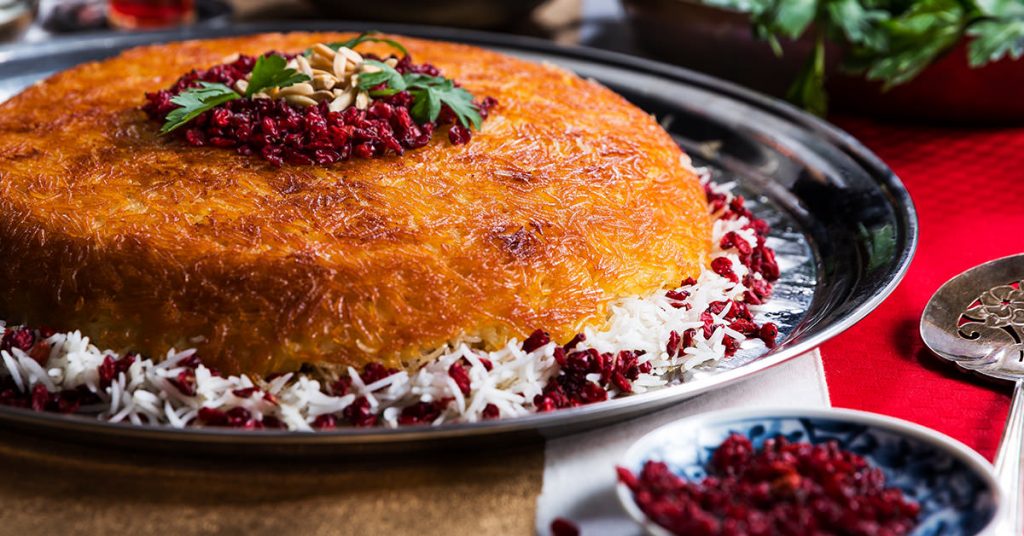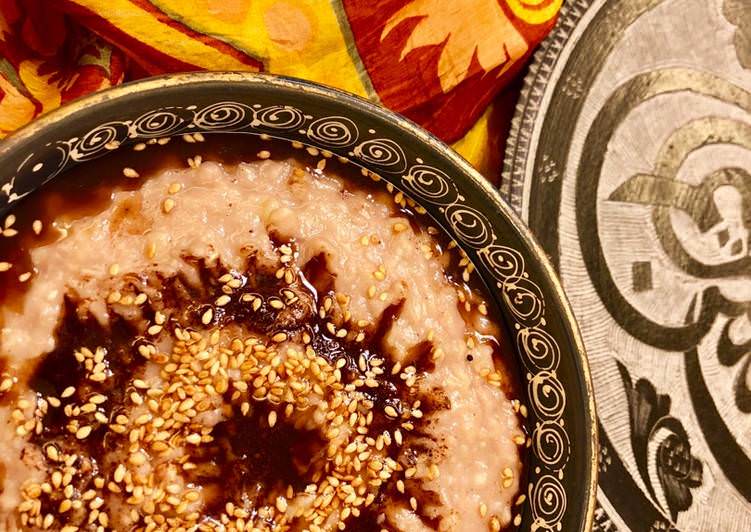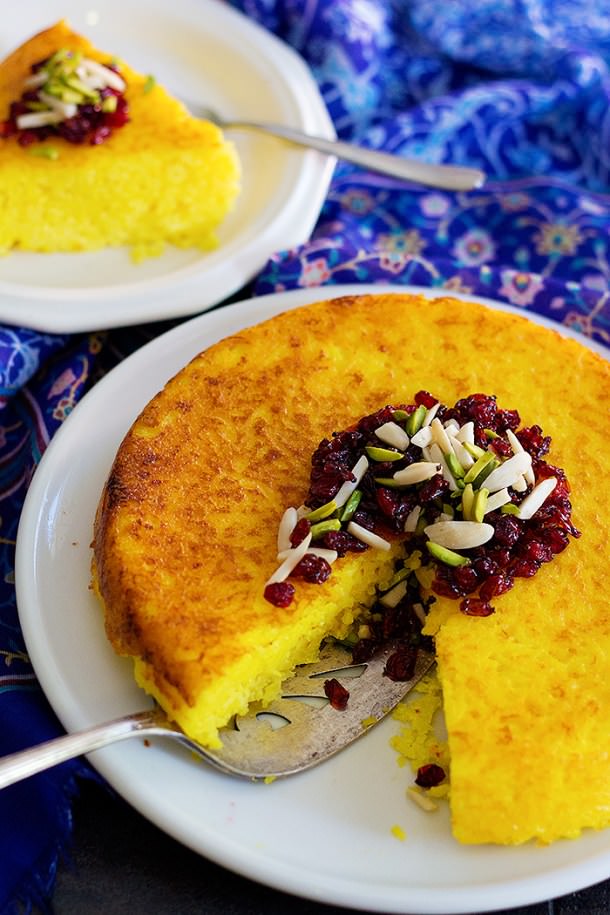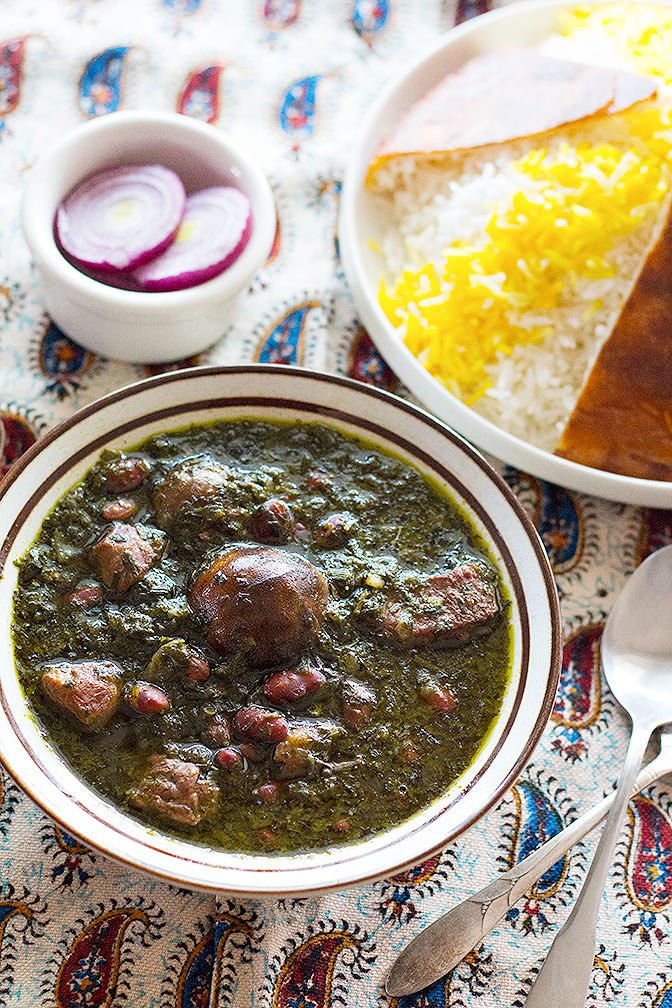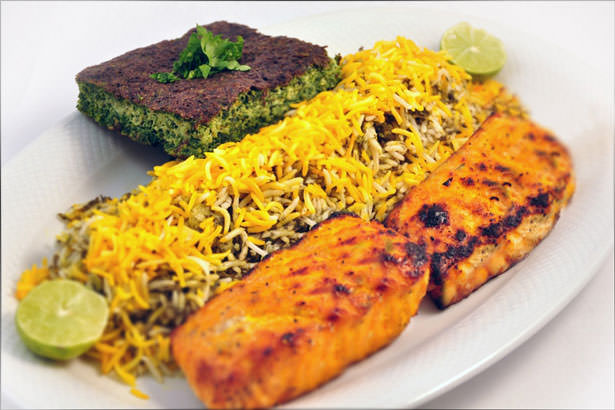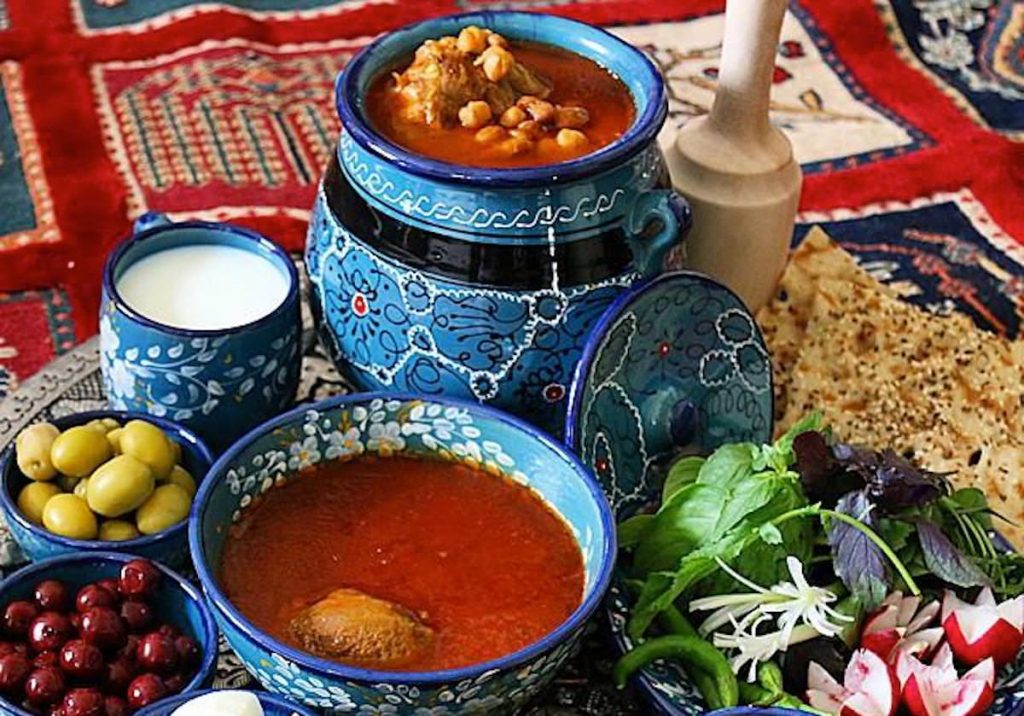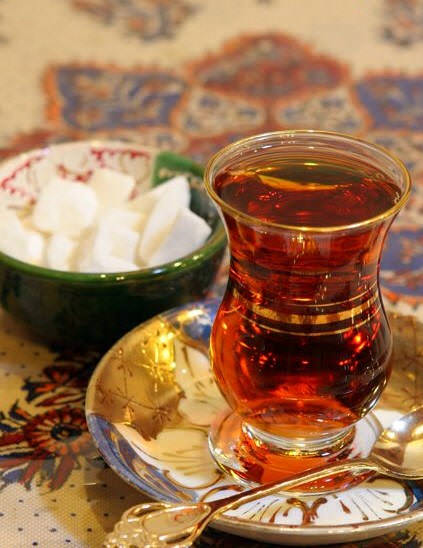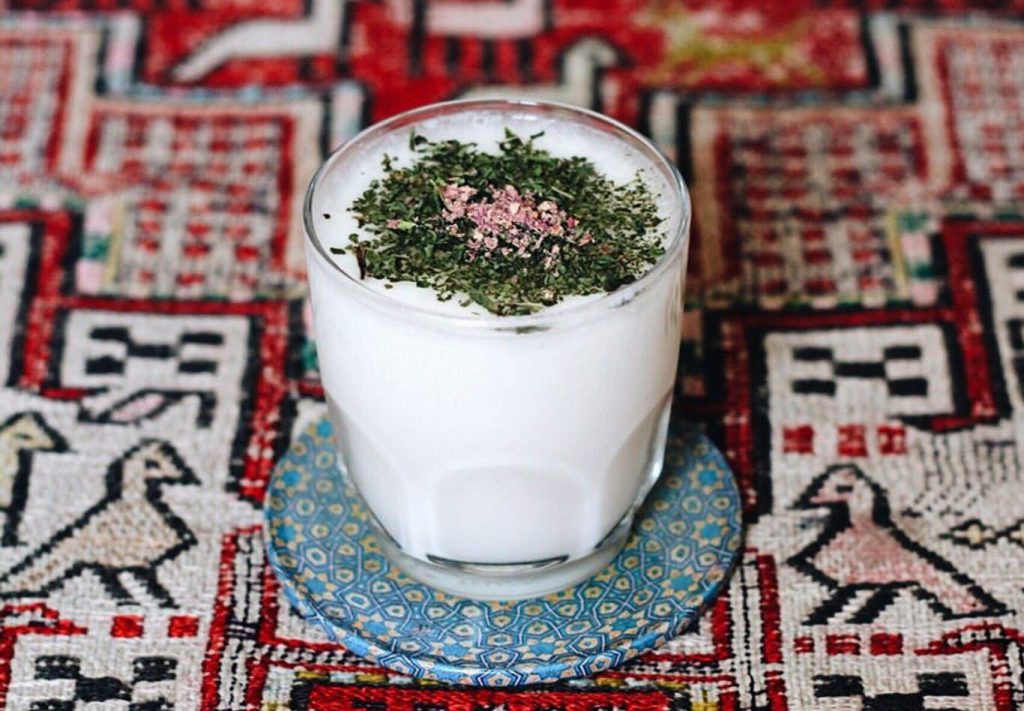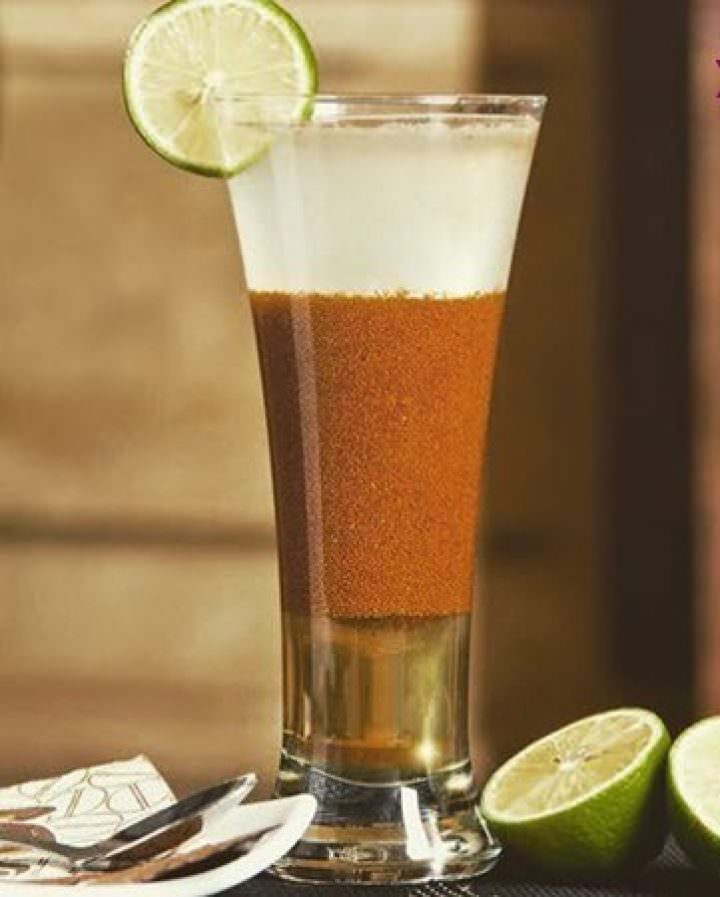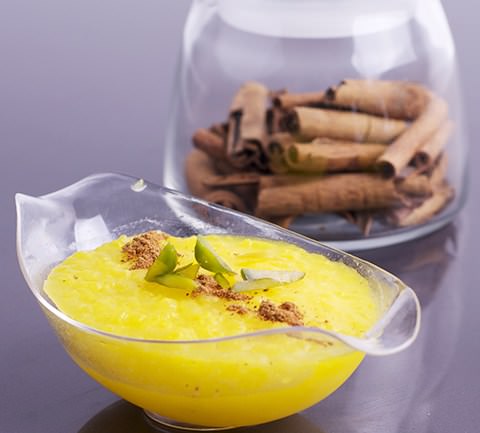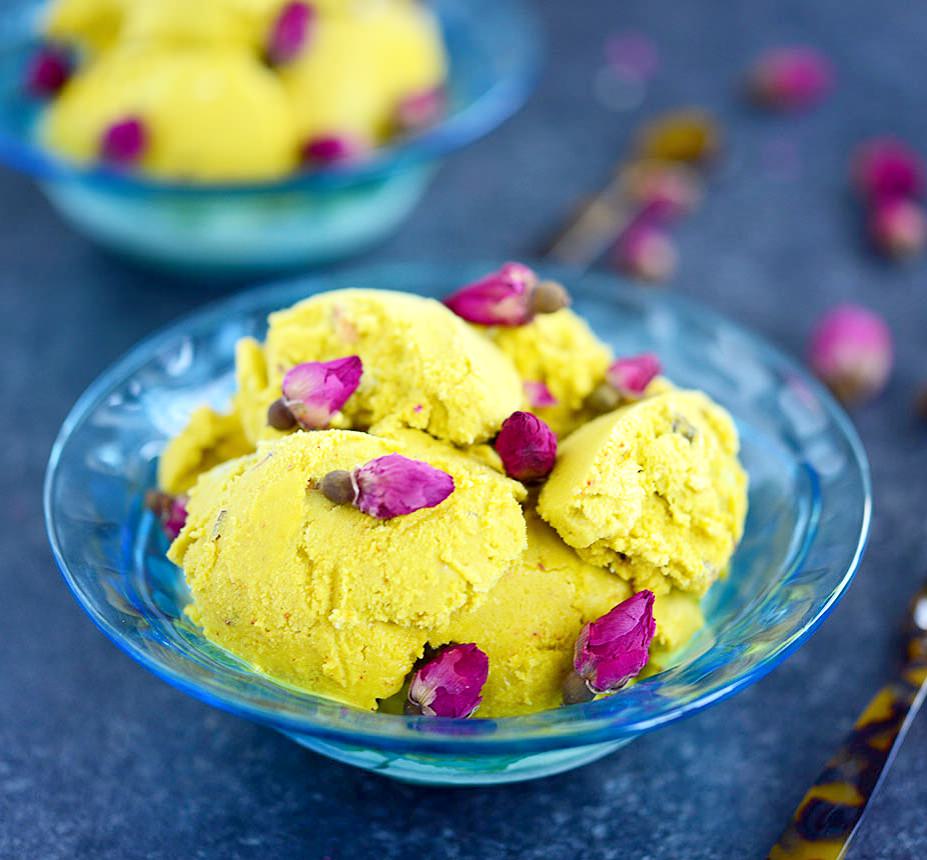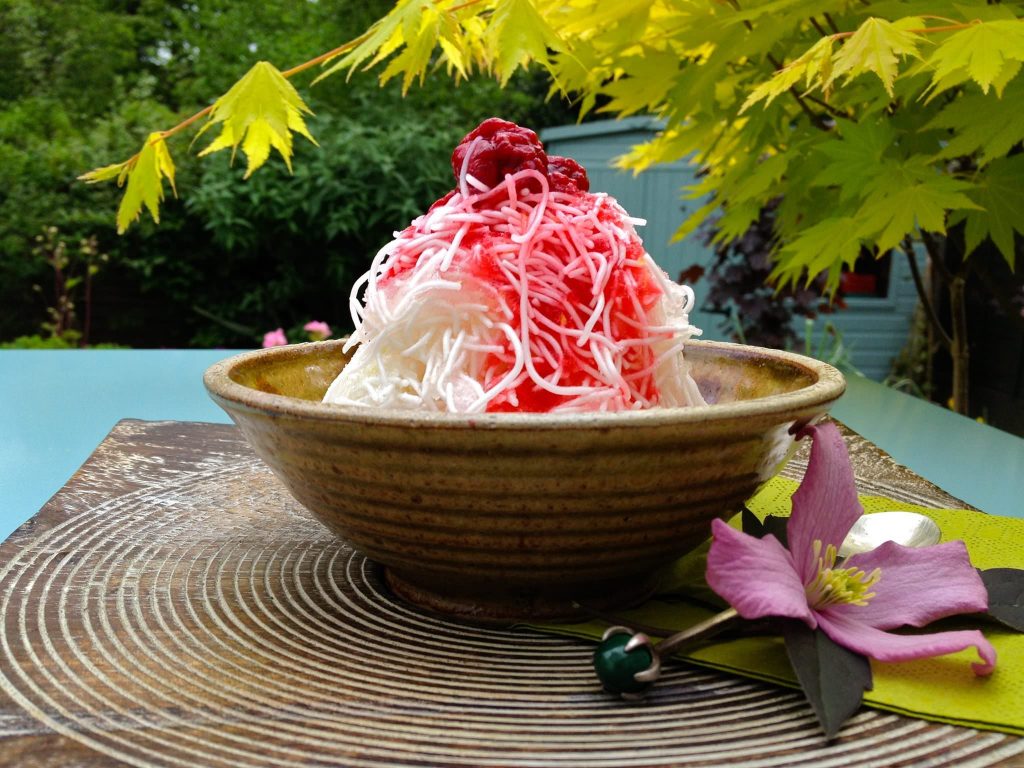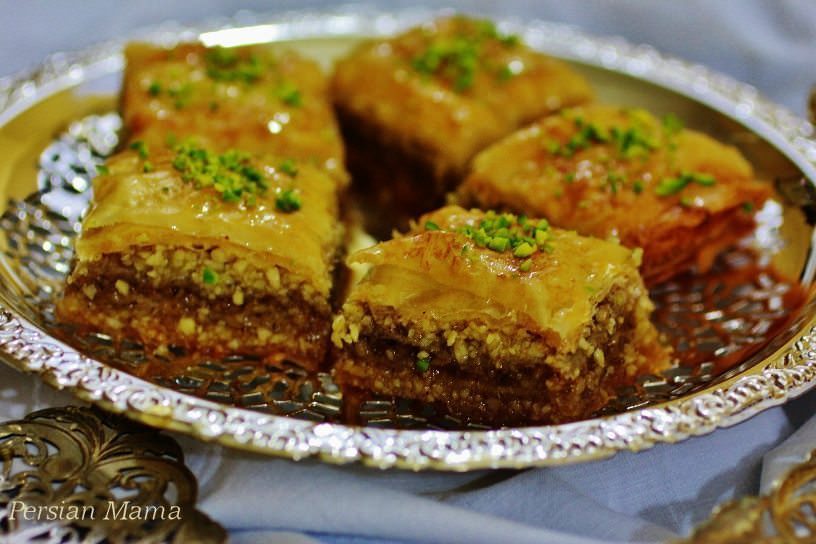Believe it or not, many visit Iran just to taste unique yet less known Iranian cuisine. Even if you’re not a food aficionado, you’ll most likely enjoy eating Iranian main and side dishes, drinks, and observing food customs like table manners, and cooking festivals. So, buckle up for a little tour of the Persian cuisine.
You can get your Iran visa with only 19 EUR through 1stQuest.

Traditional Persian breakfast (tea, flatbread, cheese, butter, fruit jam, honey, nuts, and cucumbers)
Introduction to Persian food
Iran is the land of world’s greatest ancient empires. Many might have heard about Persian carpets, Saffron, pistachio, historic monuments, etc., but less is known about its well-established, mysterious cuisine.
Iran’s diverse culture and climate have been reflected in its cuisine. In Iran, food resources and ingredients vary to a great extent depending on where the food is originated. But, despite the differences, there are still some common features and ingredients amongst all Persian dishes. These include: rice, meat (mostly lamb or beef), local herbs and vegetable, pomegranates, raisins, plums, dried lime, saffron, cinnamon, and turmeric are widely used in Iranian cuisine. Having all these ingredients in hand, here is a list you can rely on to taste most out of diverse Iranian cuisine.
Read also: 7 Myths That Are Holding You Back from Traveling to Iran
Must try Iranian cuisine
Main courses
- Haleem
A thick delicious porridge comprising wheat and meat (turkey, lamb, or beef). It is a quite popular breakfast in Iran served hot with sugar/salt, cinnamon powder, sesame, and melted butter.
- Tahchin (Persian baked rice cake)
A delicious traditional Persian food served for dinner or lunch consisting of layers of saffron, rice, and tender chicken/lamb/beef.
- Ghormeh Sabzi
Literally meaning ‘fried herbs’, it’s a herb stew cooked with kidney beans, dried lime, served with cooked rice (‘Polo’). Ghormeh Sabzi is very popular and is perhaps on the list of every Iranian’s top 5 favorite dishes.
- Sabzi Polo ba Mahi
Literally meaning “herb rice “ and “ fish”, this food is served traditionally for the Persian new year (Norooz) with side dishes like pickled vegetables.
- Dizi (Abgusht)
An Iranian stew made with lamb, chickpeas, white beans, onion, potatoes, tomatoes, turmeric, and dried lime. It is usually served with flatbread (‘Lavash’, ‘Sangak’ or ‘Taftoon’), fresh vegetables, Doogh, and pickled vegetables.
- Kabab Koobideh
A Persian meat kebab made of ground beef or lamb, salt, black pepper, and grated onions. The mixture is shaped on special skewers and is grilled over hot coal. It is served with Polo and is accompanied by grilled tomatoes, onions, and pickled vegetable.
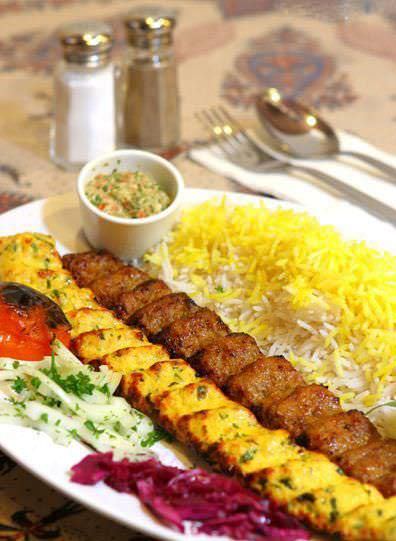
Kabab Koobideh (Persian meat Kabab) with Jooje Kabab (Persian chicken Kabab), grilled tomatoes and rice
Read also: 5 Persian Customs to Know Before Visiting Iran
Drinks
- Tea
Black tea, or “Chai’i” as Iranians call it, is Iran’s most popular drink. Iranians drink Chai’i several times a day as well as with breakfast. It is usually served with sugar cubes, raisins, or traditional pastry.
- Doogh
A mixture of sour yogurt, water, and dried herbs (usually mint and rose). It is perhaps one of Iran’s most well-known traditional drinks served with most foods.
- ‘Sharbat’s
Sharbats are Iranian traditional sweet drinks served in summer. There are many different types of sharbats, but some famous ones are Khak-e-Shir, Sekanjabin, Tokhm-e-Reyhan, and Bahar Narenj. Depending on your taste, you might fall in love with one or all sharbats but make sure to try some of them because they are not only thirst-quenching but also have many health benefits.
Desserts
- Sholeh Zard
Persian saffron rice pudding garnished with cinnamon and slivered pistachios.
- Bastani Sonnati
Traditional Persian saffron ice-cream made with extra cream chips in it.
- Faloodeh Shirazi
It is a cold Persian dessert made of rice starch noodles in a semi-frozen syrup containing rose water and sugar. It is often served with lime juice and ate together with Bastani Sonnati.
- Baghlava
A very sweet layered pastry filled with nuts and held together with a syrup or honey. It is usually served with Chai’i.
Do you want to travel to Iran cheap and easy? You can choose among reasonably priced ready-made trip packages or customize your own trip with our local travel experts, then book the whole package together and save hundreds. Check Private Tours.
By Niloofar Emami
Resources :
Iran Health Reference Cafenabz

